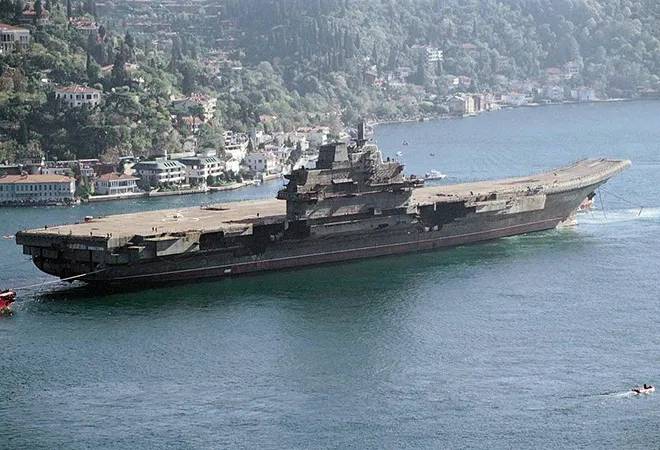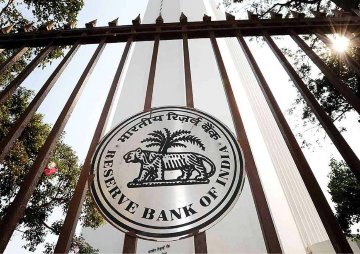China’s navy launched its second aircraft carrier this week, five years after commissioning its first. The Type 001A, China’s first domestically built aircraft carrier, is likely to be operational by 2020. Beijing’s uneasy neighbors watched as the People’s Liberation Army Navy indulged in an elaborate ceremony to notify the wider world of its arrival as a serious naval power.
Such displays are not out of the ordinary. As a rising power, China’s military advancement is to be expected. If Beijing wants to project power far beyond its shores, a blue-water navy is a prerequisite.
However, China’s naval development will be seen in a different light because the country is entangled in multiple maritime disputes around its periphery. Its naval presence is also growing in the Indian Ocean and the larger Pacific.
President Xi Jinping has launched defense reforms to shift resources from land to air and sea. The Chinese defense ministry has been articulating the need for its navy to gradually shift focus from “offshore waters defense” to “open-seas protection.”
Even with its growing might, China’s navy remains far from a serious challenger to the formidable US Navy. But regional powers now have to seriously rethink their naval options.
India faces some real dilemmas. New Delhi isn’t officially allied with any power and is still struggling to reform its military, even as China’s challenge to Indian interests grows by the day.
At the global level, China refuses to recognize India’s rise and seeks to thwart it in every forum, from the United Nations Security Council to the Nuclear Supplier’s Group.
At the regional level, Beijing is taking a consistently pro-Pakistan position on issues ranging from Afghanistan to Kashmir. Bilaterally, the disputed-border issue is getting trickier. China recently renamed unilaterally six places in the Indian state of Arunachal Pradesh in apparent retaliation against the Dalai Lama’s visit to India’s easternmost state.
China’s naval presence in the Indian Ocean region continues to grow. Chinese submarines have been making regular forays in the Indian Ocean region since December 2013 on the pretext of antipiracy patrols. Its Maritime Silk Road initiative aims to gain a higher profile in the Indian Ocean Region, while reducing India’s natural geographic advantages.
In the garb of protecting its trade and energy sea lanes, China is building partnerships with countries around the Indian Ocean periphery. From Djibouti to Hambantota in SriLanka to Gwadar in Pakistan, new military facilities are being constructed to project Chinese naval power.
For New Delhi, this looks like strategic encirclement at a time when there are growing concerns about Chinese intentions. Not surprisingly, India is investing to ramp up its naval power. Unlike China, India has been operating an aircraft carrier since 1961, but delays and shoddy planning continue to mar its aspirations.
India’s first indigenous aircraft carrier, the 40,000-tonne INS Vikrant, was launched in 2013, but its commissioning has been delayed to 2020. It will be another decade before the second indigenous carrier, the 65,000-tonne INS Vishal, is up and running. As a result, the 44,570-tonne INS Vikramaditya will be India’s only carrier for the next few years.
China’s state-run Global Times newspaper took a swipe at Indian efforts recently, arguing, “New Delhi is perhaps too impatient to develop an aircraft carrier. The country is still in its initial stage of industrialization, and there will be many technical obstacles that stand in the way of a build-up of aircraft carriers.” It continued, “New Delhi should perhaps be less eager to speed up the process of building aircraft carriers in order to counter China’s growing sway in the Indian Ocean, and focus more on its economy.”
India will have to focus more on antiship capabilities, especially submarines and antiship missiles. But beyond platforms, India is now actively engaged in the maritime domain with likeminded countries in the region. Naval cooperation with countries like Australia, Indonesia, Japan and Vietnam is a top priority of Indian defense diplomacy.
Yet without active participation from the US, the regional states lack the ability to resist China’s maritime ambitions. The Trump administration will have to think beyond North Korea in crafting policy on the Indo-Pacific. Otherwise, China’s aircraft carrier display will be one more step toward regional maritime dominance by Beijing.
This commentary was published in The Wall Street Journal.
The views expressed above belong to the author(s). ORF research and analyses now available on Telegram! Click here to access our curated content — blogs, longforms and interviews.




 PREV
PREV


